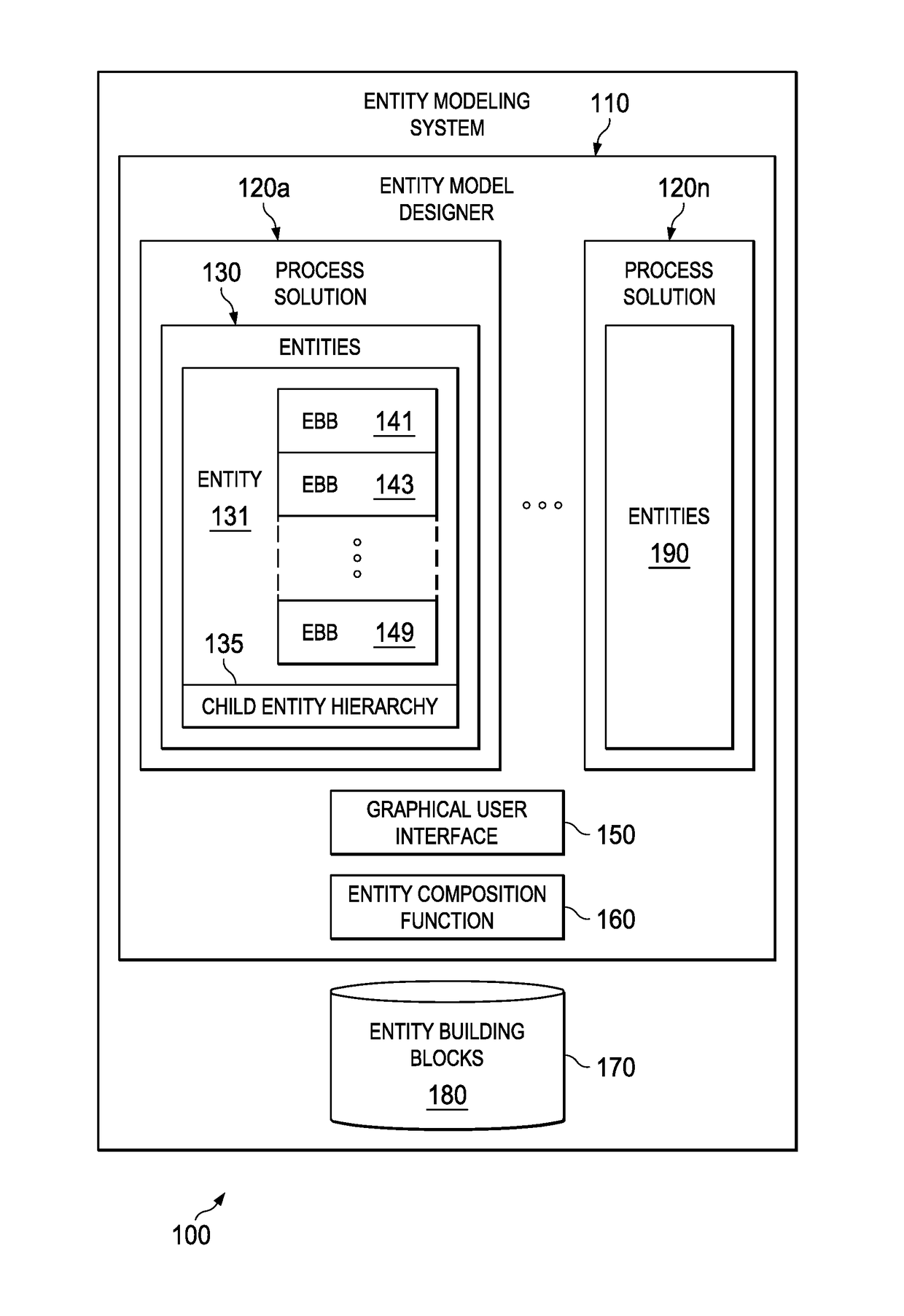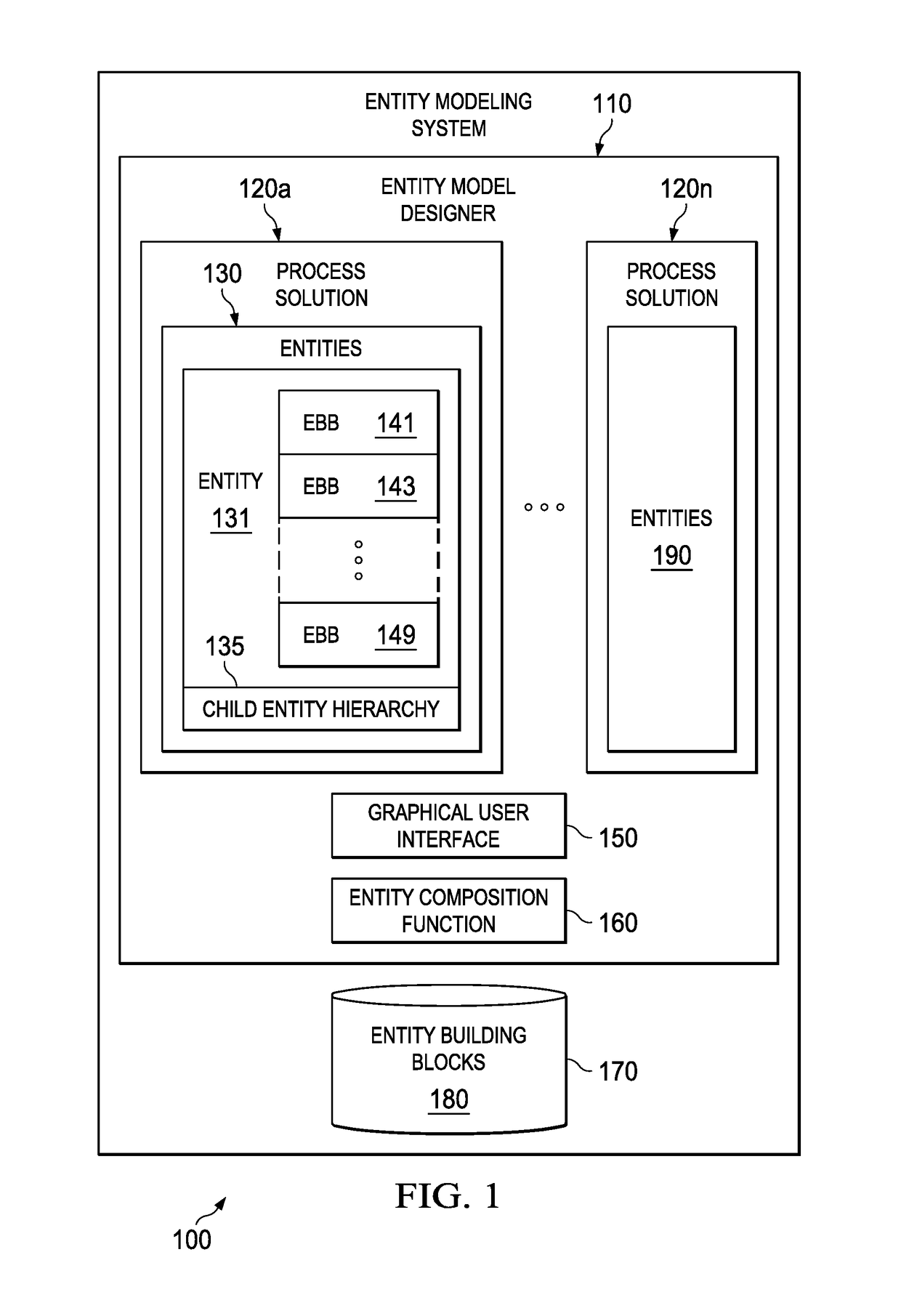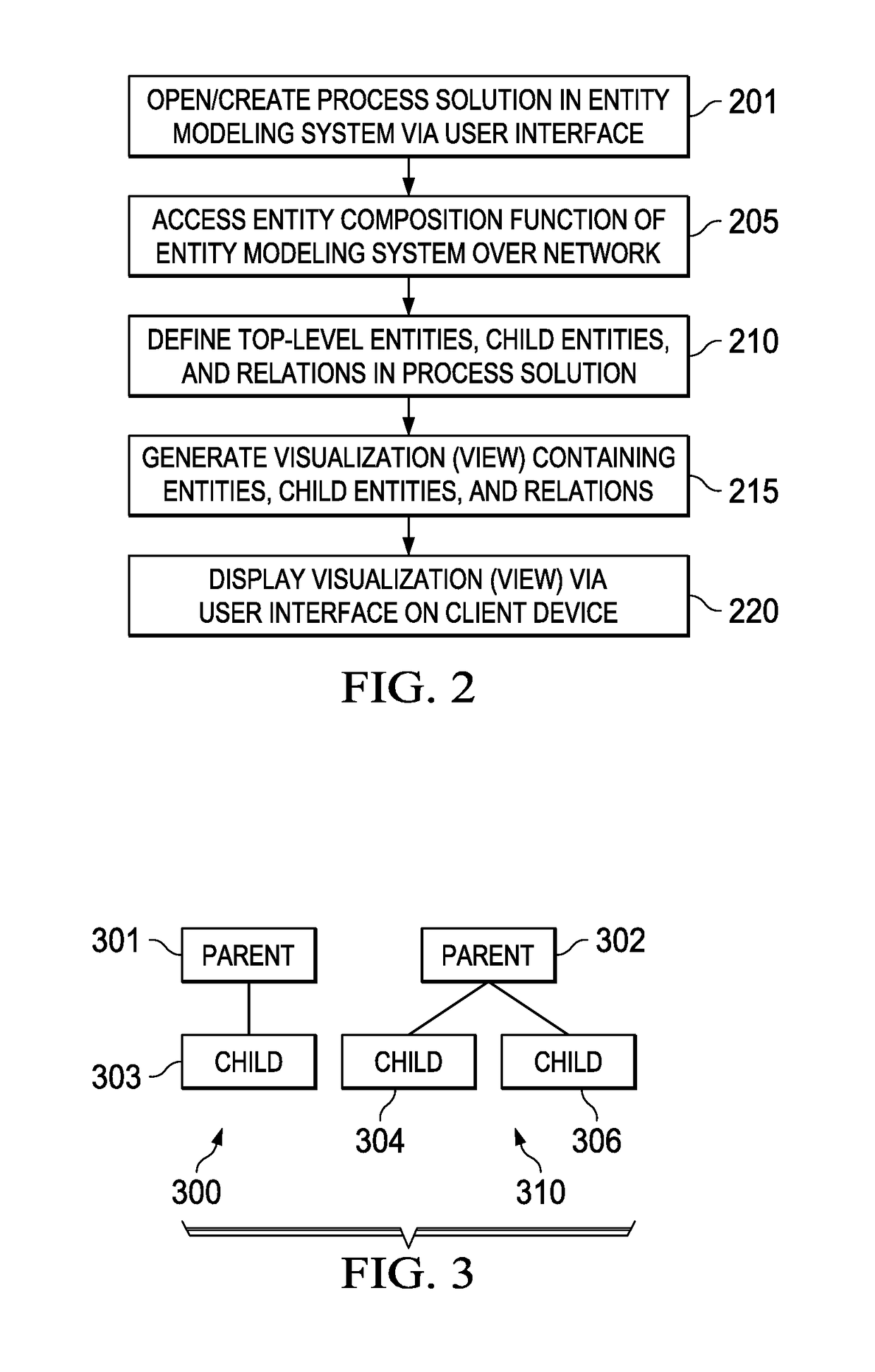Compositional entity modeling systems and methods
a technology of entity modeling and entity modeling, applied in the field of low-code application development platforms, can solve the problems of inability to reuse or extend the functions provided by one entity modeling tool, different skills required for entity modeling from those required for data administration, and process can take months and require specialized personnel, so as to achieve rapid collaborative application development
- Summary
- Abstract
- Description
- Claims
- Application Information
AI Technical Summary
Benefits of technology
Problems solved by technology
Method used
Image
Examples
example problem
[0101 Domain
[0102]Managing leave balances of employees is something almost any company has to deal with. This includes many activities, for example:[0103]Employees submitting new leave requests;[0104]Managers approving or rejecting leave requests of their direct reports;[0105]Employees inspecting the status of their leave requests;[0106]Employees inspecting their leave balances;[0107]Employees canceling their leave requests (before or after it has been approved);[0108]Keeping track of how many days of leave individual employees are granted on a yearly basis.
[0109]Form-Based Applications
[0110]There are a lot of applications that are mainly about data entry, data visualization, and data manipulation. End users interact with such applications through work lists that list items matching various filter conditions and forms through which new information can be entered or existing information can be changed. In addition, the application developer may choose to define actions (buttons) that...
PUM
 Login to View More
Login to View More Abstract
Description
Claims
Application Information
 Login to View More
Login to View More - R&D
- Intellectual Property
- Life Sciences
- Materials
- Tech Scout
- Unparalleled Data Quality
- Higher Quality Content
- 60% Fewer Hallucinations
Browse by: Latest US Patents, China's latest patents, Technical Efficacy Thesaurus, Application Domain, Technology Topic, Popular Technical Reports.
© 2025 PatSnap. All rights reserved.Legal|Privacy policy|Modern Slavery Act Transparency Statement|Sitemap|About US| Contact US: help@patsnap.com



